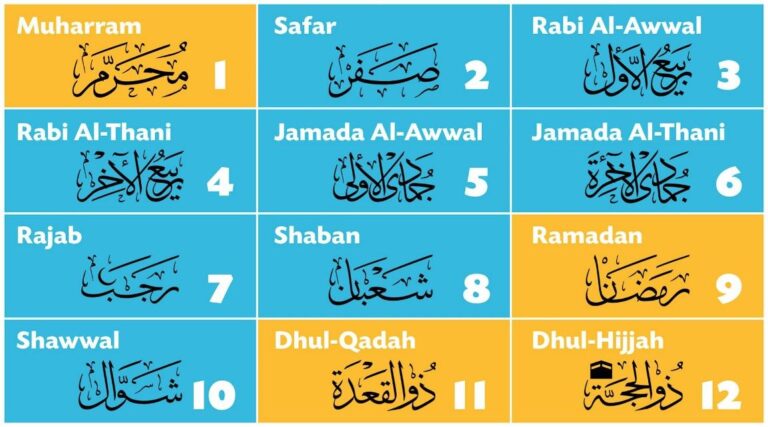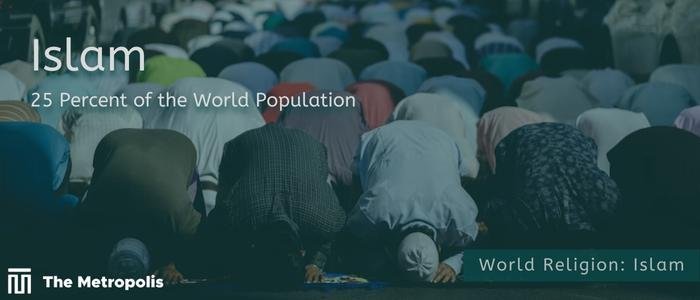Anjum Bin Anam –
Islam, a monotheistic religion with over a quarter of the world’s population as its followers, known as Muslims, is one of the largest Abrahamic religions. The central belief of Islam is the declaration of faith, known as the Kalima Tayiba: “There is no deity but Allah, and Muhammad is His messenger”. Muslims are found all over the world, with the largest populations in the Middle East, Indonesia, South Asia, and sub-Saharan Africa. According to recent estimates, there are over 1.8 billion Muslims worldwide, making Islam the second-largest religion in the world after Christianity. There are also significant Muslim communities in Europe, North America, and other regions.
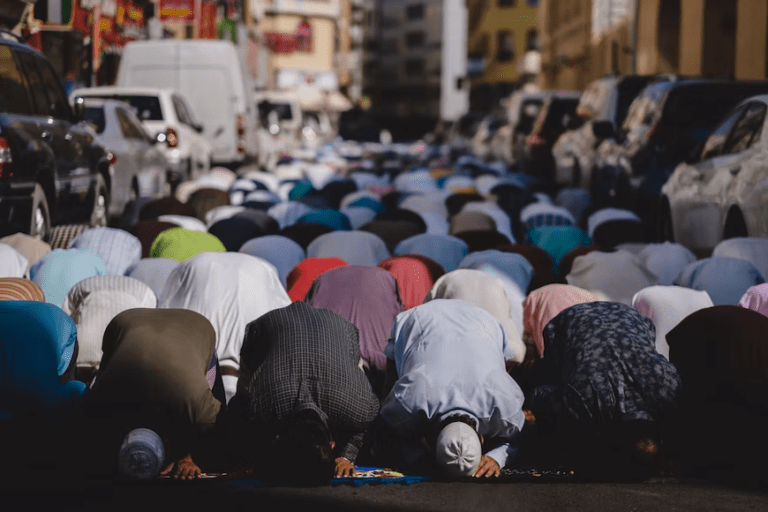
Five pillars, known as the Five Pillars of Islam, are considered to be the foundation of a Muslim’s faith and practice. Adherence to these pillars is seen as crucial for the spiritual and moral development of a Muslim and is central to maintaining a strong connection to God. The five pillars provide a framework for leading a virtuous and fulfilling life and are meant to serve as a guide for an individual’s spiritual growth and development. A Muslim person must follow the five pillars of Islam-
-
Kalima: A declaration of the Core Beliefs of Islam.
-
Salat: Five daily prayers performed at specified times to show devotion to God.
-
Sawm: Fasting during the month of Ramadan, from dawn until dusk, as an act of self-discipline and devotion.
-
Zakat: Giving a portion (1/40th) of one’s accumulated wealth to the poor and needy.
-
Hajj: A pilgrimage to the Kaaba in Mecca, performed as an act of worship and a demonstration of solidarity with the global Muslim community.
The Seven Core Beliefs of Islam are:
-
Belief in Allah as the one and only Creator.
-
Belief in the Angels as beings made of light, who only obey Allah’s commands and do not possess free will.
-
Belief in the Quran as Allah’s book and his revealed words.
-
Belief in the Prophets and Messengers as Allah’s chosen preachers who delivered his message according to his will.
-
Belief in the Day of Judgment (Qayamat) as determined by Allah.
-
Belief in Predestination (Taqdeer), that everything is written by Allah’s will.
-
Belief in the Resurrection (Qiyamah), where all souls will be reborn after death according to Allah’s will.
Muslims believe that the complete guidance for their faith and practice is found in the Holy Quran. They are monotheists, recognizing only one deity, Allah. Within the Muslim community, there are three main denominations:
-
Sunni: The largest branch of Islam, estimated to comprise around 85 percent of the Muslim population.
-
Shia: A smaller branch of Islam, estimated to comprise around 15 percent of the Muslim population.
-
Ibadi: A small branch of Islam primarily found in Oman, with a smaller presence in North Africa.
Some other little groups can be found in the later part of this article.

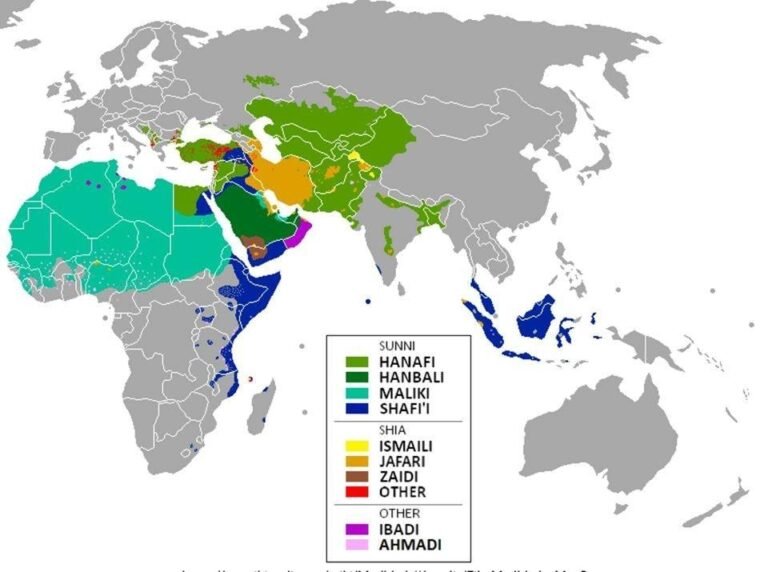
Sunni (85 Percent):
According to Sunni Muslim belief, after the Prophet Muhammad, there were four Caliphs:
-
Hazrat Abu Bakr
-
Hazrat Umar
-
Hazrat Usman
-
Hazrat Ali
It is also believed that Imam Mahdi (see details in the Shia beliefs) will be born as a human being.
There are four notable Sunni Imams (An Imam in Islam is a spiritual and religious leader):
-
Muhammad Ibn Idris As Safi
-
Malik Ibn Anas
-
Ahmad Ibn Hanbal
-
Abu Hanifa An Numan.
These Imams are considered to be the founders of the four main schools of Sunni Islamic jurisprudence. The division of Sunni Islam is based on four schools of thought:
-
Hanafi (30 Percent) – Follows the teachings of Imam Abu Hanifa an Numan and is prevalent in countries such as India, Pakistan, Bangladesh, Afghanistan, Tajikistan, Kyrgyzstan, Turkey, Kazakhstan, Turkmenistan, Uyghur, Tatar, Bosnia, Albania, Macedonia, Baluch, Western Iraq, Western Iraq, Western Egypt, Jordan, Syria, Lebanon, and Palestine.
-
Safi’i (28 Percent) – Follows the teachings of Muhammad Ibn Idris As-Safi and is prevalent in Southern Iraq, Northern Iraq (Kurdish), Eastern Turkey (Kurdish), Eastern Egypt, Ethiopia, Somalia, Indonesia, and Malaysia.
-
Maliki (23 Percent) – Follows the teachings of Malik Ibn Anas and is prevalent in Southern Egypt, Libya, Tunisia, Morocco, Algeria, Chad, Sudan, Niger, Mali, Mauritania, Nigeria, Senegal, Guinea, and Eritrea.
-
Hanabil (4 Percent) – Follows the teachings of Ahmad Ibn Hanbal and is prevalent in Saudi Arabia, UAE, and Qatar.
Shia (15 Percent):
Shia Muslims believe that, apart from Prophet Muhammad, the position of other Prophets varies, with some being above the Imams and others being equal to them. They do not believe in Caliphate, but instead believe in Imams, with Hazrat Ali being considered the chief or founder of the Imamate. He is considered second only to Prophet Muhammad. In addition to the traditional declaration of faith (Kalima), Shias add the phrase “Ali is the friend of Allah”. They consider not only the Quran, but also the Prophets, Messengers, and Imams as important sources of guidance and belief.
Shia Muslims are divided into three sub-groups:
i) Jafari (8 Percent) –
They are primarily located in Iran, Azerbaijan, Eastern Iraq, Bahrain, and some parts of Lebanon. The Jafaris believe Abul Hasan Musa Kazim, the third son of the sixth Imam Jafar al-Sadiq, to be the next Imam, but do not recognize Ismail ibn Jafar, the first son of Jafar al-Sadiq, as the next Imam. The Jafaris, also known as Twelvers, have a different list of Imams compared to the Ismailis. They believe Imam Mahdi is the final Imam who is born but currently hidden, and Hazrat Ali is the first Imam.
Twelve Imams according to their belief:
-
Imam Muttakin Ali (Hazrat Ali)
-
Imam Hasan Mujtaba (Hazrat Ali’s elder son)
-
Imam Abu Abdullah Hussain (Hazrat Ali’s younger son)
-
Imam Sajjad Ali Zainul Abedin
-
Imam Muhammad Baqir ibn Ali
-
Imam Aba Abdullah Zafar Sadiq
-
Imam Abul Hasan Musa Kazim (Imam Aba Abdullah Zafar Sadiq’s third son)
-
Imam Abul Hasan Ali Reza
-
Imam Mohammad Jawad Takki
-
Imam Ali or Ibn Mohammed
-
Imam Abu Mohammad Hasan Askari
-
Imam Muhammad Al Mahdi (Born but hidden)
ii) Zaidi (6 Percent)
According to Zaydis, there are five Imams:
-
Hazrat Ali
-
Hazrat Ali’s elder son, Imam Hasan Mujtaba
-
Hazrat Ali’s younger son, Imam Abu Abdullah Hussain
-
Imam Sajjad Ali Zainul Abedin
-
Imam Zaid Ibn Ali
Zaydis believe in these five Imams, with Zayd Ibn Ali as the fifth and last Imam. They are primarily found in the South of Saudi Arabia and Yemen.
iii) Ismaili (1 Percent)
The Ismailis, who exist to some extent in Kashmir, Tajikistan, and Afghanistan, are divided into two groups: Fatimids and Seveners. The Fatimids are further divided into Mustali and Nizari, while the Seveners are divided into Waqifis and Qamartians. According to the belief of Seveners, there are 7 Imams, but according to Fatimids, the Imamate is still ongoing and the first 7 Imams are considered the most important. The Seveners consider their seventh Imam as Imam Mahdi, who has already been born. Meanwhile, the Fatimids believe that Imam Mahdi will be born in the future.
Their style of Imamate is as follows:
Differences between Sunni and Shia
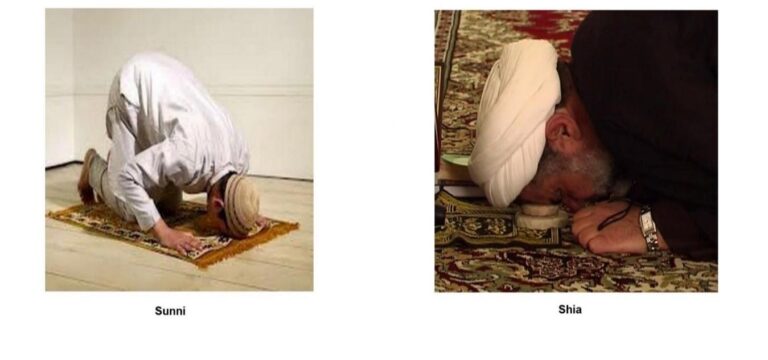
Other Small Muslim Groups:
Ibadi: This branch of Islam is often described as a reformist or progressive movement, and it places a strong emphasis on the teachings of Abd Allah ibn Ibad. Ibadis follow a different interpretation of Islamic scriptures and laws than those followed by Sunni or Shia Muslims, and they have a distinct religious and cultural identity.
Qaysani: They follow the teachings of Muhammad Ibn Hanafiyah, who they consider to be the last Imam. This belief sets them apart from the majority of Muslims, who follow the Twelve Imams in Shia Islam or the Four Rightly Guided Caliphs in Sunni Islam. The Qaysani community is found in parts of the Middle East and North Africa.
Afathi: This is a sect of Islam that recognizes Abudallah al-Aftah, the second son of Jafar al-Sadiq (6th Imam of Jafri Shias), as the last imam. Unlike other sects, they do not consider his other two sons Ismail and Musa as Imams.
Ahmadiyya: They originated in the late 19th century in the Punjab region of South Asia. They hold the belief that Imam Mahdi, the prophesied final Imam in Shi’a Islam, has already come in the form of a person named Mirza Ghulam Ahmad, who lived in the Punjab region. This belief sets the Ahmadiyya apart from mainstream Sunni, Shia, and Ibadhi Islam, who believe that Imam Mahdi has yet to appear. The Ahmadiyya community has faced opposition and controversy in many Muslim-majority countries, with some governments and religious authorities considering them to be heretical.
Sufi: The Sufi movement is a mystical branch of Islam that emphasizes a direct, personal relationship with God through spirituality and devotion. Sufis believe in the pursuit of spiritual purification and the attainment of closeness to God through meditation, prayer, and other spiritual practices. They also often place a strong emphasis on the importance of the individual’s spiritual journey and the development of one’s own unique relationship with God. Sufis have a long history within Islam and have been an influential part of the Islamic cultural and spiritual landscape for centuries. Despite this, their beliefs and practices are not universally accepted by all Muslims, particularly among those who adhere to a more traditional interpretation of Islam.
Some Common Things:
Religious Book:
Al Quran is considered the most respected scripture by both Sunni and Shia Muslims. However, there are some differences in the interpretation of certain verses.

Life Style Explanation:
Hadith refers to the collection of sayings, actions, and teachings of the Prophet Muhammad that were recorded and transmitted by his companions and later generations of Muslims. The hadith form a source of guidance and laws for both Sunni and Shia Muslims, but they have differences in their beliefs and collections of hadith.
Sunni Muslim relies on the collections of hadith by Six notable books of Hadiths, which are considered the most authentic collections-
-
Sahih al-Bukhari
-
Sahih Al Muslim
-
Sunnah al-Tirmidhi
-
Sunnah of Abu Dawud
-
Sunnah al-Nasa’i
-
Sunnah Ibn Majah
Sunnis believe in the authenticity of thousands of hadiths and give them importance just after the Quran.
Shia Muslims, on the other hand, place more emphasis on the hadith of the Prophet that was transmitted through the Imams and believe that only the Imams have the proper interpretation of the Prophet’s words. They consider the hadith collections by Bukhari and Muslim to be unreliable and have their collections of hadith, such as “Kitab al-Kafi” and “Man la yahduruhu al-Faqih”. Shias also believe that their Imams were divinely appointed and have a special knowledge of the hadith that was not available to others.
Law and Order:
Sariah Law refers to Islamic law, derived from the religious principles of Islam as outlined in the Quran and the Hadith.
Dietary law:
The consumption of pork, recreational drugs, and alcohol is strictly prohibited, as is the consumption of meat from animals that have not been sacrificially offered to Allah. Only certain animals and birds are permitted for meat consumption, while the consumption of meat from toxic animals is strictly forbidden.
Notable Ceremony:
Akikah, it’s a naming ceremony for Muslim newborns.
Sunnate Khatna, it’s a ritual of Muslim men’s circumcision of the genital organ.
Notable Color:
The colors green, black, and white hold significant importance in Muslim culture and religion, representing a variety of meanings and symbols. Green is often associated with Islam and is said to symbolize life, hope, and prosperity. It is also used to represent the lush gardens of Paradise. Black is considered a color of strength and power, representing the timelessness and eternal nature of Allah. It is also associated with the black cloth that covers the Kaaba in Mecca. White symbolizes purity, cleanliness, and peace, and is often used in Islamic clothing, such as the traditional Arabian thobe worn by men.
Notable sign:
“Crescent Moon with a single star” is widely accepted as a symbol of Islam, but the origin of this symbol is not specifically related to the Islamic faith or religion.

Other Notable Beliefs:
According to Islamic beliefs, Allah created two races of beings with free will, human beings made of soil and djinn made of fire, to worship him. Upon death, every Muslim human must be buried in the ground.
It is believed that the deeds and actions of individuals in their lifetime determine their fate after death. Good humans and djinn will be rewarded with entry into Jannat (Heaven), a place of peace, happiness, and abundance. On the other hand, bad humans and djinn will be punished and sent to Jahannam (Hell), a place of suffering and torment.
Islam also acknowledges the existence of angels, who are responsible for carrying out Allah’s orders and protecting believers from evil influences. According to Islamic belief, there is only one pure evil entity in the universe, the devil, known as Iblis. Iblis is a powerful djinn who was cursed by Allah for his pride and disobedience. It is believed that Iblis lures humans and djinns to commit sins, but the angels protect them by Allah’s will.
Festivals:
Eid ul Fitr
Eid ul Fitr is celebrated at the end of the month-long fast of Ramadan. On this occasion, Zakat and Fitra (types of donations) are given to the poor by the wealthy.
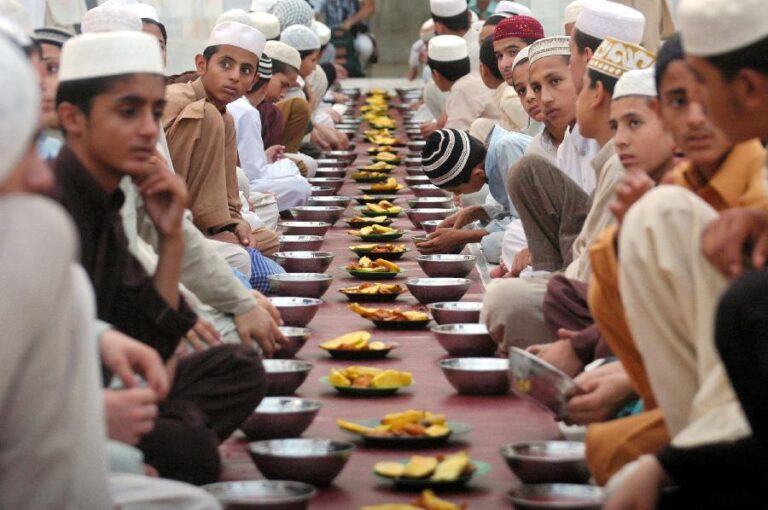
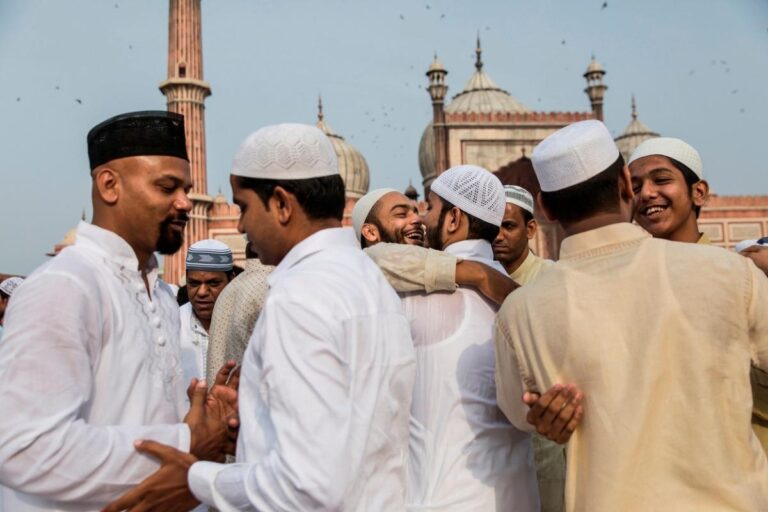
Eid ul Adha
It is celebrated after the sacrifice of sacred animals to Allah. The meat of the animal must be shared with relatives, neighbors, and the poor, and the price of the animal’s skin is donated to the poor. During this time, a person can perform the Hajj in Mecca, which is the only time and place to perform the Hajj. If performed at any other time or place, it is considered an Umrah, which is considered less significant than the Hajj.
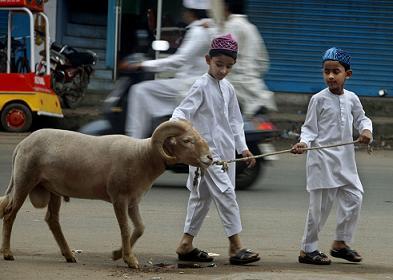
Hajj
It is considered a religious pilgrimage to the city of Mecca, in Saudi Arabia. It is a mandatory duty for all adult Muslims who are physically and financially able to perform it. The rituals of Hajj include walking seven times around the Kaaba, the symbolic cube-shaped building at the center of the Grand Mosque in Mecca, as well as visiting the nearby hills of Safa and Marwa, and the plain of Arafat. Hajj is performed annually, and it is considered a time of forgiveness, spiritual renewal, and unity for all Muslims.
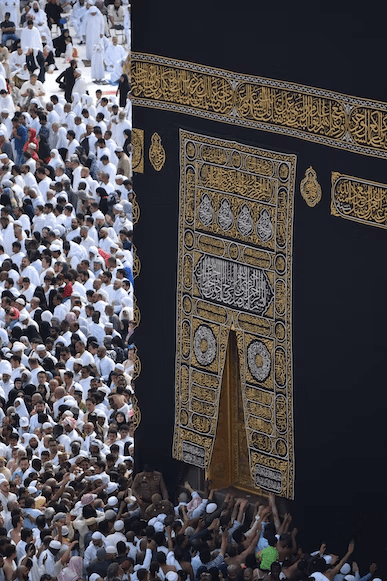
Ashura (Only Shia Festival)
The Day of Ashura marks the martyrdom of Hazrat Hussain, the youngest grandchild of Prophet Muhammad (peace be upon him). While Sunnis observe this day with mourning and fasting, some Shias are seen to beat their chests, perform self-flagellation, and engage in other acts of self-punishment to demonstrate their sadness and mourning for Hazrat Hussain.

Holy Places:
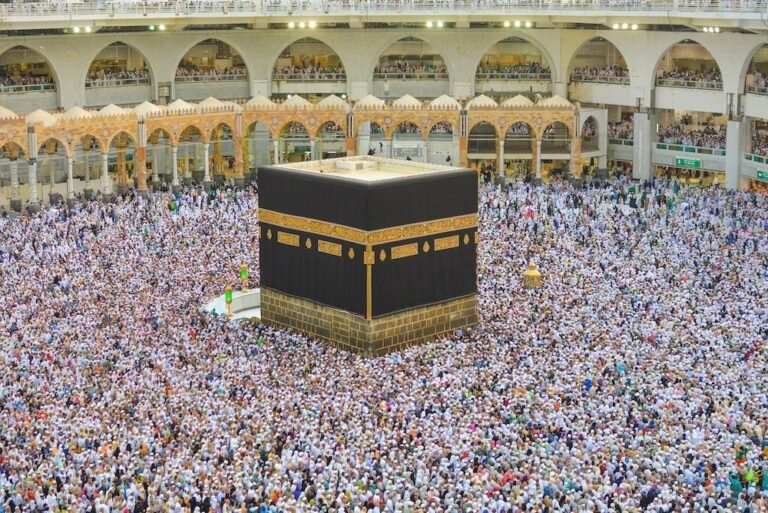
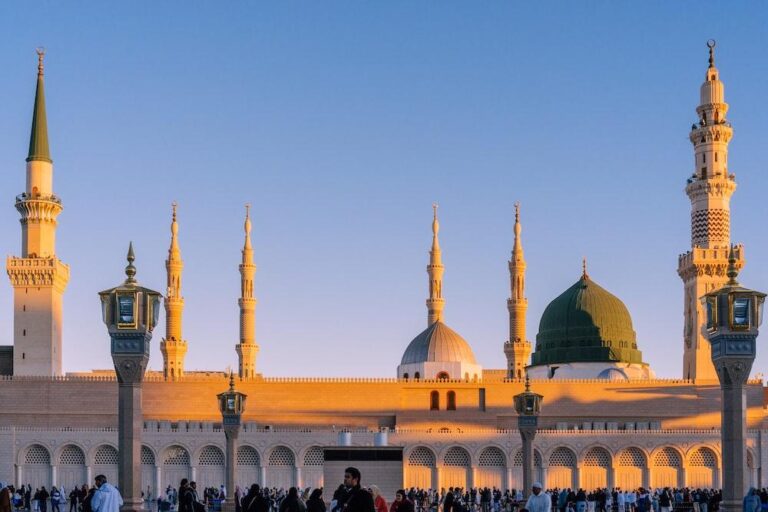
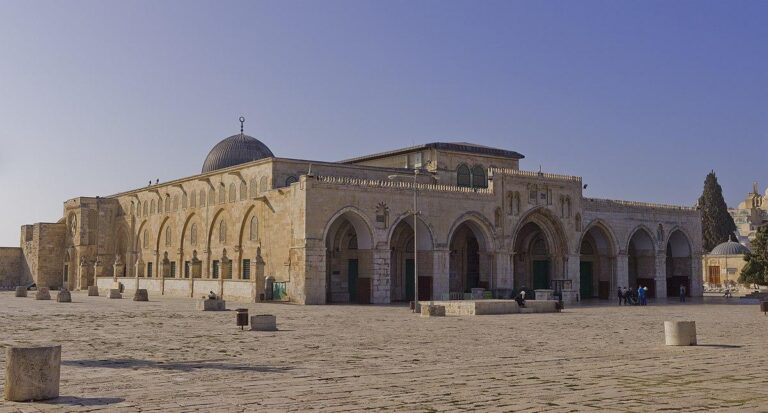
Some more holy places for Shias

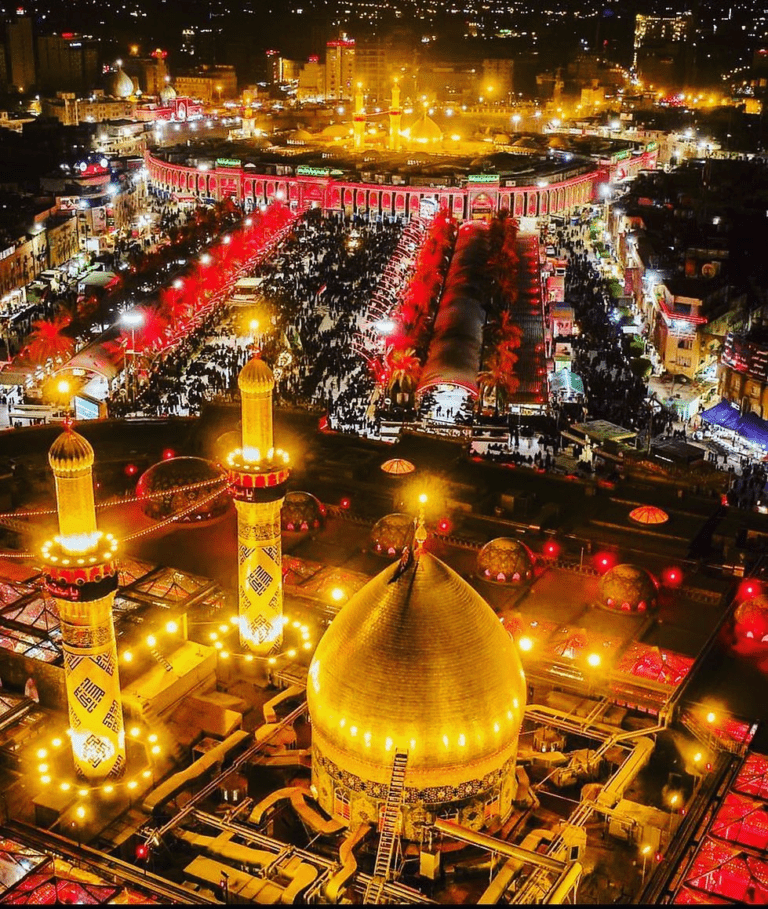
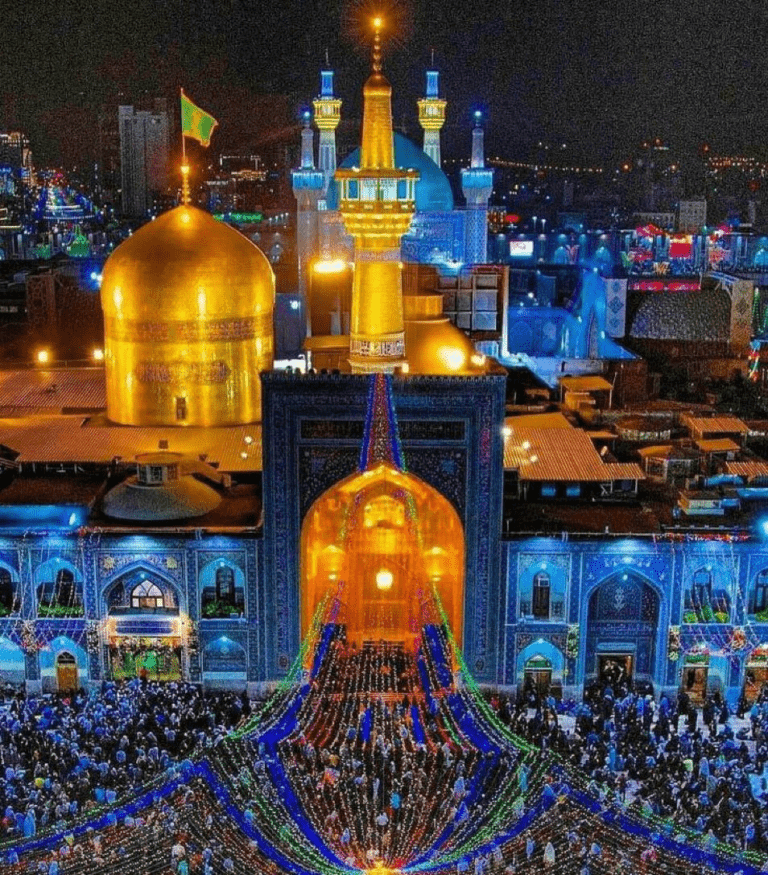
Calendar:
Muslims follow the Hijri Calendar, which is a lunar calendar. Each month in the Hijri Calendar corresponds to a complete orbit of the moon around the earth, and the calendar consists of 355 days in a year. Some months have 29 days, while others have 30 days, depending on the phase of the moon. The start of each month is marked by the sighting of a new crescent moon, typically three to four days after the new moon phase. The day starts and ends at sunset, and the weekly religious day for Muslims is Friday.
